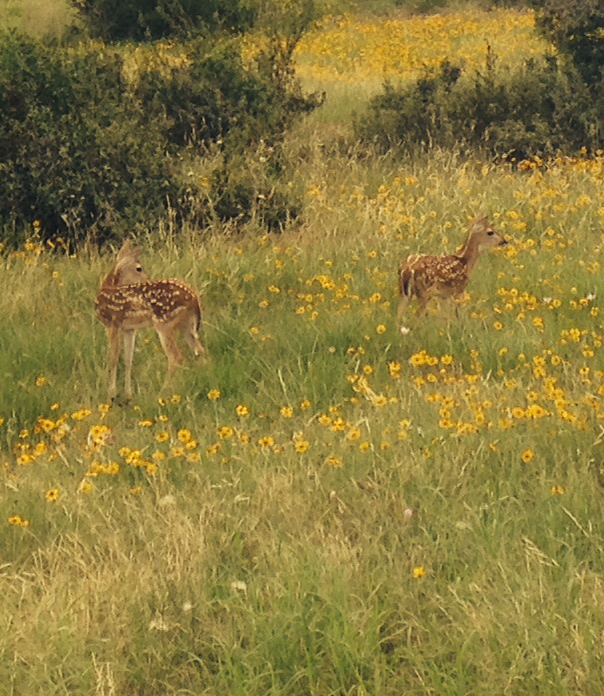With their big doe eyes, oversized ears, button noses, and white spots on reddish-brown coats, it’s hard not to be enchanted by fawns. And that they arrive in the spring, surrounded by wildflowers? Disney’s got nothing on a fawn sighting.
If you haven’t seen any yet in your neck of the woods, they are certainly on their way. After a 7-month gestation period, fawns are typically born beginning in late April and up until early July. When born, fawns commonly weigh between 4-8 pounds and, while they may look like Bambi on ice, those wobbly legs can have them standing and nursing within a half-hour of being born, and walking within a few hours. It’s not uncommon for fawns to have some nursing competition as does typically have a single fawn for their first birth and twins after that. Does begin breeding around 1-year old and can continue until they’re 8-10 years of age.
Within a few hours of birth, once the fawns are sufficiently ambulatory, does move their fawns away from the birthing site, typically hiding twins in separate locations so a predator doesn’t get both her babies. A fawn’s average 300 spots help keep it camouflaged. After about 3-4 weeks, the twins will usually be kept closer together.
While does may leave their babies for hours at a time to forage for food, they are probably still within 100 yards. Indeed, a fawn alone does not mean a fawn abandoned, which is why unless the animal is in immediate danger, be sure to consider whether it is actually abandoned before you attempt to “save” it.
Fawns spend around 90 percent of their time bedded down for the first few weeks of their lives, rousing long enough to nurse 2-3 times a day to start, for about 20-30 minutes each time, and eventually increasing to nursing 6-8 times a day. They begin eating vegetation when they’re around 2-3 weeks old, about the same time they can outrun most danger.
As summer fades into fall and winter, so, too, do the fawn’s spots. They are also weaned by now and their coat changes from a reddish hue to grayish for the winter. By November, the average whitetail male fawn will weigh around 80-85 pounds and the female around 75-80 pounds.
For the most part, where a fawn is born becomes its adult habitat. With does able to reproduce at such a young age, and with many of those births resulting in twins, it’s easy to see how deer populations, devoid of virtually any predators, explode in suburban areas. Attempts at deer management in suburban areas can be very tricky, thanks to a variety of concerns and stakeholders, and, in no small part, thanks to visions of big doe eyes, oversized ears, button noses, and white spots on reddish-brown coats.









